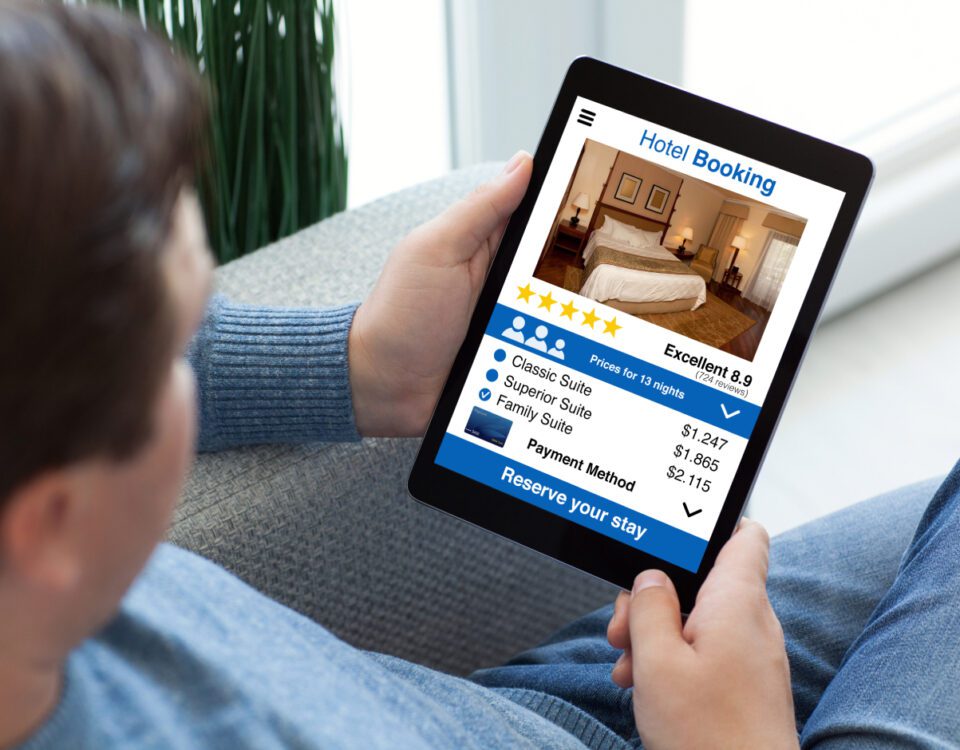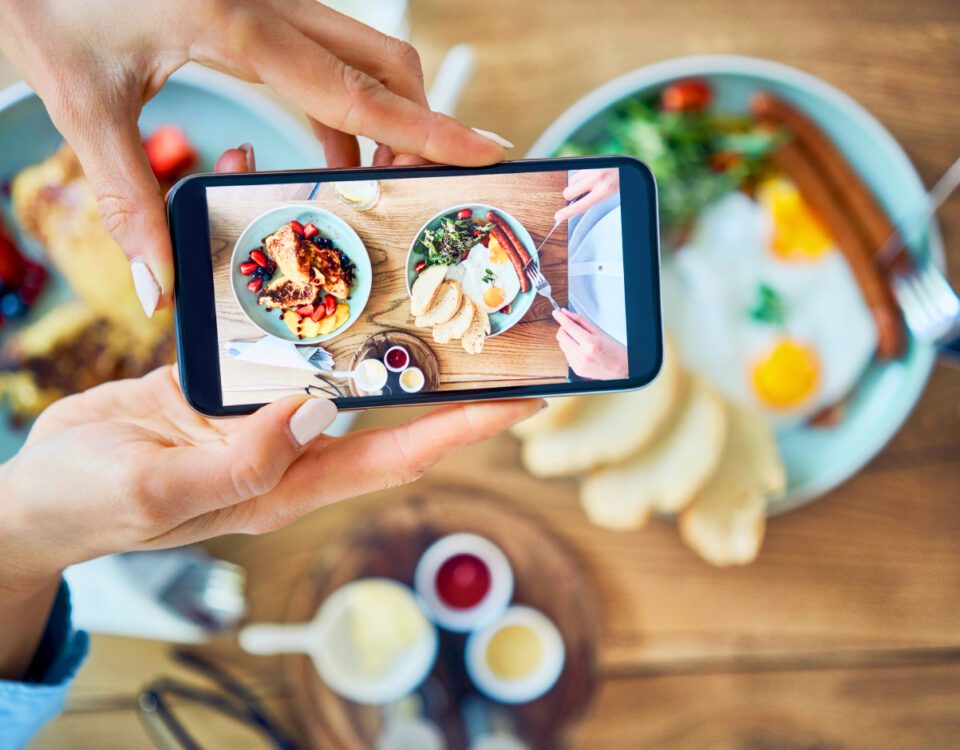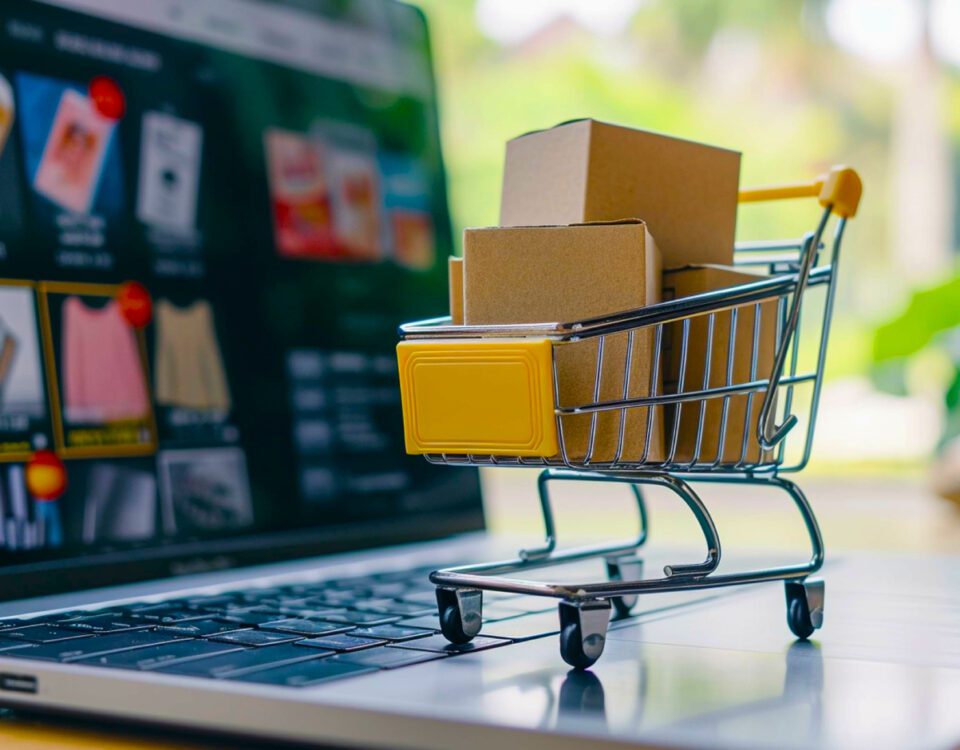Share
When social media was first introduced just a few decades ago, nobody could have predicted the huge impact it would eventually grow to have on both individuals and businesses. What started out as a simple way for friends and family members to stay in contact and share photos with each other, has now evolved into an essential tool for marketing, customer service, shopping, entertainment and more - and most modern brands wouldn’t function without it.
Initially, an organic (unpaid) approach to social media was sufficient for businesses to promote their products and services, but over the years, as competition has grown fiercer, it has become more common for brands to combine organic content with a paid advertising strategy in order to stand out from the crowd and gain results. Keep reading to learn about some of the ad options available on a selection of top social media platforms, and what they can each achieve for your business.
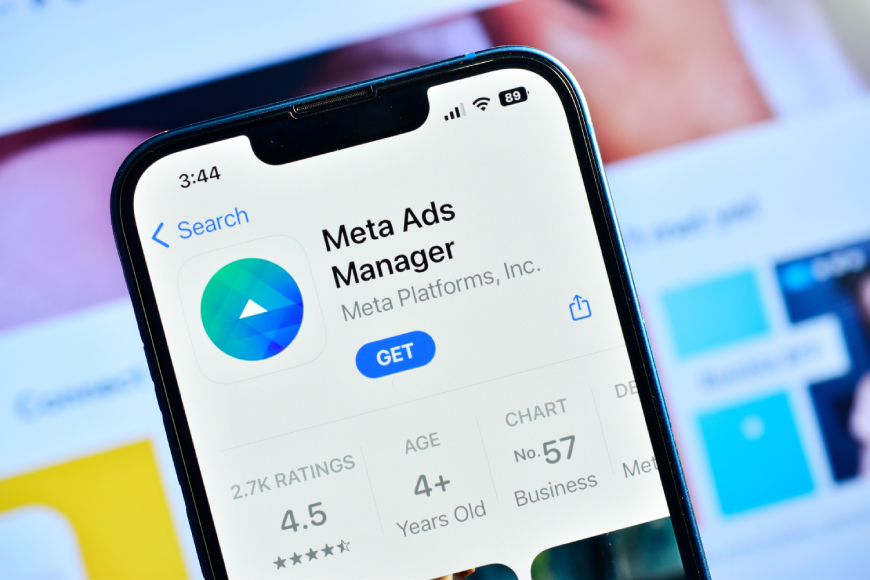

Advertising on Facebook & Instagram
Seeing as Facebook and Instagram are both owned by Meta, their advertising tools are bundled together in Meta’s comprehensive Ads Manager platform (you can also set up ads for Messenger here too). The Ads Manager offers a vast range of different ad objectives, formats and targeting options, giving brands many ways to reach their desired audiences and encourage them to take specific actions.
Meta Ad Objectives
Meta offers the following five ad campaign objectives:
Awareness
Ads with this objective aim to raise awareness of your business, helping you reach the largest number of people who are most likely to remember your ad. If your business is brand new or has been recently renamed, choosing this objective may help potential customers become more familiar with who you are and what you offer.
Traffic
Ads with this objective aim to send traffic to a webpage of your choice, such as your website or app. For example, if you’re having a sale in your eCommerce store, you should choose this objective to direct people to your sale page. If you install the Meta Pixel, you can track subsequent actions taken - such as conversions.
Leads
Ads with this objective aim to collect leads for your business via messages, phone calls or sign-ups. For example, if you want potential customers to sign up to your monthly newsletter, this objective can help you reach people who are willing to share their information with you to learn more about your brand.
App promotion
Ads with this objective aim to encourage people on mobile devices to install your app, or take a specific action within it, such as making a purchase.
Sales
Ads with this objective are targeted towards people who are likely to purchase your products or services, or add a specific item to their basket.
Meta Ad Formats
• Image - A single image of your product or brand.
• Video - A video, ideally 15 seconds or less, showing your product or brand.
• Carousel - 2 or more images and/or videos in a single ad, each with their own headline, description, link and CTA.
• Instant Experience - A full-screen experience that opens after someone taps your ad on a mobile device.
• Collection - This allows people to discover, browse and purchase products and services from their phone in a visual and immersive way. Collection ads include a cover image or video with multiple products shown underneath. When someone taps on the ad, a full-screen Instant Experience opens.
• Story Ads - These will appear between users’ friends’ Stories on Facebook, Instagram and Messenger. You can include a single image or a single video.
Facebook & Instagram Boosted Posts
If you’re new to advertising on Meta’s apps - or if you just want to give an existing post an extra nudge - you may want to consider boosting instead. A boosted post is essentially a simplified version of an ad, and is quicker and easier to set up. On both Facebook and Instagram, you’ll see a blue button below each of your posts that says ‘Boost post’. Tapping or clicking on this will open up a basic version of Meta’s ads manager, where you can set an objective, choose a CTA button (optional), select your target audience, set a duration and enter your budget. It’s a great option if you haven’t got enough time or expertise to set up a full ad, or if you want to expand a post’s reach without having a specific aim in mind.
Alternatively, if you have a little more experience but still want to use an existing post as an ad, you can boost your post through the Ads Manager instead. This will give you a higher level of control over your objective, desired audience and other variables, but still means you won’t have to create an ad from scratch.


Advertising on Twitter
Twitter also has its own Ads Manager platform, which provides a central workspace to plan, manage, and report on campaigns. You can access the Ads Manager by logging into (or signing up for) your ads account here. After this, you can customise your dashboard to see relevant campaigns, creatives and results. Again, there are plenty of objectives and ad formats to choose from, all of which can help you boost awareness and sales.
Twitter Campaign Objectives
Twitter offers three different ad campaign objectives which each contain their own sub-categories:
Awareness
• Reach: This objective maximises the number of people who see your ad within a set period of time.
Consideration
• Video views: This objective extends the reach of your videos and helps you drive brand awareness with efficient, quality views.
• Pre-roll views: This objective places your video ad in front of another video that a user is already watching. Twitter will make sure it only appears in front of videos that your target audience are interested in, and that are safe for your brand reputation.
• App installs: This objective drives app downloads by targeting mobile users.
• Website traffic: This objective encourages people to click through to your website. Just like the Meta Pixel, Twitter has its own version called the Twitter Pixel, which enables you to monitor conversions.
• Engagement: This objective encourages retweets, replies, profile visits, link clicks and other engagements.
• Followers: This objective aims to grow your follower base (check out the Follower Ads section below to learn more about this).
Conversion
• App re-engagements: This objective drives your existing customers to open, update, or take a specific action in your app.
Twitter Ad Formats
Promoted Ads
Formerly known as Promoted Tweets, Promoted Ads on Twitter look like regular tweets - the only difference is that they’re being paid to appear. Like ordinary tweets, they can be liked, retweeted and replied to, but they are labelled as ads, with a ‘Promoted’ tag in the lower left-hand corner. They can be broken down into the following categories:
• Text ads: The most basic form of ads, these look like normal tweets with no additional media components.
• Image ads: Tweets that include a single photo.
• Video ads: Tweets with a video attached. Videos will loop if they are under 60 seconds long.
• Moment ads: A curated collection of tweets that allows you to tell a longer story.
• Carousel ads: These include up to six images or videos that can be swiped through horizontally.
Follower Ads
Formerly known as Promoted Accounts, Follower Ads allow you to promote your brand’s entire Twitter account to users who don’t yet follow you, helping you grow your audience on the platform. They are displayed in potential followers’ timelines, as well as in the ‘Who to Follow’ section and in search results. Just like with Promoted Ads, Follower Ads are labelled as ‘Promoted’ to distinguish them from other organically recommended accounts.
Twitter Takeover
This is Twitter’s most premium, mass-reach placement. It drives results by allowing your brand to completely take over the home feed and Explore tabs across both desktop and mobile. You can choose either Timeline Takeover, which puts your ad at the top of the timeline so it’s the first thing people see when they open Twitter, or Trend Takeover, which puts your ad alongside whatever is currently trending, filling the entire top third of the Explore tab.


Advertising on LinkedIn
LinkedIn’s advertising platform is called the Campaign Manager. It enables businesses to create, launch, and evaluate the performance of their ad campaigns. It offers a similar range of objectives and formats to Meta and Twitter, but seeing as LinkedIn is the world’s biggest network of professionals, some of its options are more B2B and career-focused - so if this is what you’re after, LinkedIn could be the right platform for you to advertise on.
LinkedIn Ad Objectives
LinkedIn offers three different ad campaign objectives which each contain their own sub-categories:
Awareness
• Brand awareness
Consideration
• Website visits
• Engagement
• Video views
Conversions
• Lead generation
• Website conversions
• Job applicants
LinkedIn Ad Formats
Sponsored Content
• Single image ads: These simply include one image and appear directly in the feed of professionals you want to reach.
• Video ads: These enable you to captivate your audience with sight, sound and motion.
• Carousel ads: These allow you to showcase up to 10 images with their own links that can be swiped through horizontally.
• Event ads: These allow you to promote LinkedIn Events from your Page to a defined audience. They’re optimised to highlight important event details, such as the time and date.
• Document ads: These enable you to inspire audiences with thought leadership or collect leads at scale by asking readers to input their details to unlock the full PDF.
Sponsored Messaging
• Conversation ads: These allow you to start quality conversations with professionals through a choose-your-own-path experience.
• Message ads: These allow you to send direct messages via LinkedIn Messages to your prospects in order to spark immediate action.
Lead gen forms
These come pre-filled with accurate LinkedIn profile data, meaning members can send you their professional info with just a couple of clicks.
Text & Dynamic Ads
• Text ads: These consist of a headline, brief text and an image.
• Spotlight ads: Linking to your website or a specific landing page, these dynamic ads are seen on desktop devices and are tailored to each member based on their own LinkedIn profile data.
• Follower ads: These encourage members to follow your LinkedIn page on desktop. Like Spotlight ads, they’re tailored to each member, featuring their profile photo next to your company’s logo, plus their first name and your company name in the ad copy.
LinkedIn Boosted Posts
Just like on Facebook and Instagram, LinkedIn also offers the ability to boost your posts if you don’t want to set up an entire ad. Above your posts, you’ll see a blue Boost button. Simply click on this and choose your objective, audience, end date and budget. The three types of content LinkedIn recommends you boost are industry thought leadership, customer spotlights, and new product launches or events.
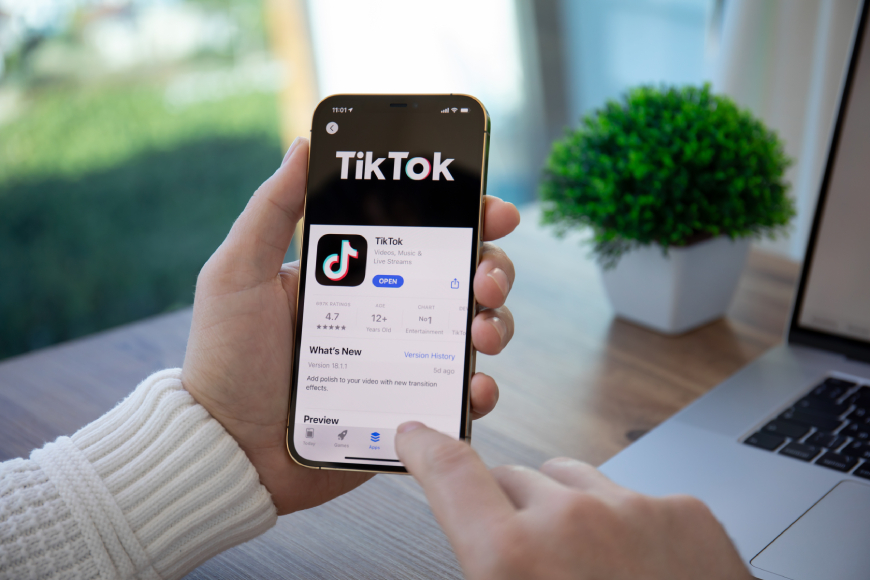

Advertising on TikTok
TikTok also has an excellent advertising platform called TikTok Ads Manager, where you can share your brand’s story, unleash your creativity with a range of solutions, access advanced targeting and easily monitor your campaign performance in one place. Of course, due to the nature of the app, TikTok ads are video-focused - so if you want to promote your brand using short-form videos and/or animated graphics, this is the right platform for you.
TikTok Ad Objectives
TikTok offers three different ad campaign objectives which each contain their own sub-categories:
Awareness
• Reach: This objective raises awareness of your product or service to large audiences.
Consideration
• Traffic: This objective drives people to your desired URL, such as your website's landing page, a blog post or your app.
• Video Views: This objective is designed to maximise plays of your video ads from audiences most likely to engage with them.
• Lead Generation: This objective lets you cultivate prospects and engage leads. When someone taps the CTA button on a lead gen ad, it will open an Instant Form where people can learn about your business, leave their contact information and signal their interest in your product or service.
• Community Interaction: This objective is split into two different options - Follower Optimisation, which encourages follower growth, or Profile Visit Optimisation, which increases traffic to your brand’s page, whether they follow you or not.
Conversions
• Product Sales: This objective drives sales for products from your TikTok Shop, website and app. You can use the Catalogue Sales campaign type to create retargeting ads which feature specific products that people have already expressed interest in.
• Website Conversions: This objective sends people to your website and encourages them to perform a specific action, like making a purchase or adding an item to their cart. You can install the TikTok Pixel to track conversions.
• App Promotion: This objective is designed to encourage app installs and other in-app actions, such as making a purchase
TikTok Ad Formats
In-Feed Ads
Also known as Non-Spark Ads, these are the standard video ads that appear in between users’ videos when scrolling through the For You page. They’re very similar to the ads you see in between Instagram Stories. They can include multiple CTAs and can be anywhere between 9 to 15 seconds long. The other type of in-feed ads, Spark Ads, are essentially TikTok’s version of boosted posts - they’re made from existing videos that are already on your page.
Brand Takeover
These premium ads show up full-screen as soon as users open the app, making them one of the best options for delivering mass awareness and extremely high reach. If you choose this format, you’ll have 100% share of voice for the day your ad is featured, meaning users won’t see any other Brand Takeover on that particular day. Naturally, this means they come with a higher price tag than other ad formats!
TopView
These are similar to Brand Takeover ads, but instead of playing as soon as the app is opened, they appear as the first in-feed post after 3 seconds. They are also displayed at the top of the For You page, and support up to 60 seconds of full-screen autoplay video with sound.
Branded Hashtag Challenge
This UGC-focused ad format is very unique to TikTok and blends in seamlessly with the regular, organic hashtag trends and challenges you often see on the app. When a user taps on your sponsored hashtag, they’re taken to a landing page with your brand’s logo, a link to your website, a brief description of the challenge, and a selection of popular videos that other fans have made using the hashtag.
Branded Effects
Another unique ad format, this allows brands to design their own custom effects on the app, including shareable stickers, AR filters and lenses. Your effects can be live for up to 10 days at a time , offering a fun and creative way to encourage users to directly interact with your brand. This is a great option if your main goal is to increase engagement.
Summary
It’s certainly a lot to take in, but we hope this overview has helped you understand some of the basics of advertising on social media and the benefits it can bring to both small and large businesses. Don’t forget there are plenty more handy resources on each platform, so if there are any additional areas you’d like to learn about before setting up your first advert - such as the best audiences to target - feel free to browse the help centre of your chosen network.
Don’t fancy spending any cash on social at the moment? No problem! Check out this episode of our podcast to find out why it’s not always necessary to use paid ads, and how you can still achieve powerful results with an organic strategy.






